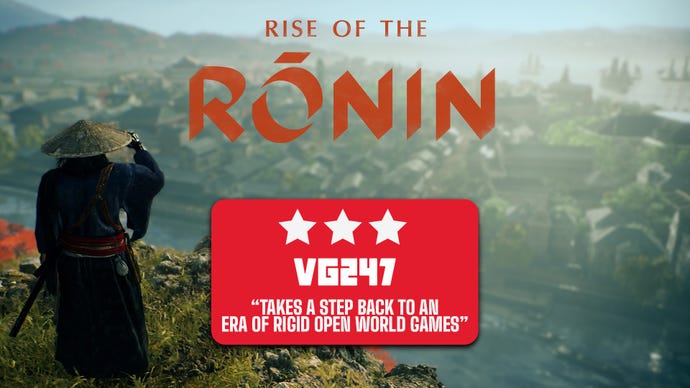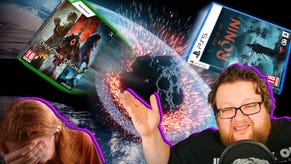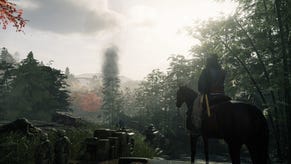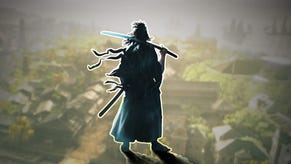Rise of the Ronin review - Team Ninja without the bite, or the Nioh heights
Rise of the Ronin is undeniably an evolution of everything Team Ninja has made before, it just picked the wrong path to evolve.
Rise of the Ronin is a frustrating game. If you’re familiar with the work of Japanese studio Team Ninja, that sentence may not be surprising to read. This is a team that has long prided itself on creating challenging, and sometimes unforgiving, action games laser-focused on delivering a specific experience. You’re either onboard with that or you aren’t.
But this game is not frustrating because of its exacting difficulty, myriad of interlocking systems or rage-inducing boss fights. No, what makes it so is that - in an attempt to appeal to a wider audience, Rise of the Ronin appropriates the worst parts of its contemporaries.
Rise of the Ronin is simultaneously Team Ninja’s most modern, and its most dated, game. The jump in graphical fidelity compared to the Nioh games is massive, and it’s all the more impressive when you factor in how large and open the game’s world is. It’s the sort of upgrade many Western studios had to undertake between the PS3 and PS4 generations. That this is happening in the PS5 era, lessens the effect, but the benefits are nonetheless palpable.
With that tech overhaul, however, comes a baggage of dated ideas and mechanics those other studios had to shed in the years since. Anyone reading this likely already imagines the sort of game Ronin is. It’s an open-world action RPG with multiple large zones, and a dozen map icons to denote everything from the different types of quests to all the collectables.
There are Fugitives to hunt, cats to catch, a town to restore Public Order to, and a Veiled Edge Banner to raise. You’ll spot out-of-reach chests and other pick-ups as you roam around, prompting you to get off your horse and do some light platforming to unlock a reward; regions have completion rates achieved after clearing every item on their checklist. I was surprised how quickly Ronin settled into this out-moded rhythm, particularly given Team Ninja’s history.
As it does in Far Cry, Assassin’s Creed, Horizon and all the other 'icon janitor' games, the moment-to-moment quickly becomes predictable and wearisome. Every one of those activities more or less plays out the same way whether you’re five or 15 hours into it. There isn’t enough mechanical depth here to make the repetition worthwhile.

It was particularly amusing to see Ronin pull out similar tools to complement those features. The Dexterity skill tree has a Far Cry-style multi-target assassination move. You can dampen your footstep sounds; make yourself harder to detect, and even spot enemies through walls (though not permanently tag them). And, just like its genre forebears, Ronin doesn’t penalise you for breaking stealth, which robs it of any tension or stakes in the more interesting missions.
There’s nothing inherently wrong with borrowing from popular games, but Ronin doesn’t find a way to contextualise what it does within its framework. Bringing up Elden Ring seems like a crutch at this point, but it’s relevant here because it, too, was its maker’s first open-world game, yet no one could’ve expected just how hard it went in the opposite direction to the most popular games of that type.
Level design in Nioh was limited by any modern standard, but it allowed for deliberate enemy placement, clever shortcuts and traversal puzzles with clear danger. By designing the entire game around the open world, much of that intricacy is lost to a sea of similar-looking towns terrorised by similar-looking enemies you’re going to repeatedly take out in familiar ways.
The AI is not smart enough to create any interesting challenge beyond what I’ve seen in past Team Ninja games, or really any of the open world icon barf titles the rest of the industry puts out every year. The only saving grace is Ronin’s combat, which is superior to most of its rivals.

The moment-to-moment action in Rise of the Ronin can be brutal, both in its difficulty, and the chaos of gore, blood splatter on walls, and torn limbs brawls can leave behind. Once again, the AI hasn’t seen the necessary upgrades from the Nioh games, and enemies often rely on the same four or five tactics - and sometimes, similar movesets anyone who played those games will be familiar with.
Combat starts off with a Nioh base, but dilutes its fundamentals in order to - I imagine - make it less intimidating to new players. Nioh’s stance system is one of its most complex and rewarding mechanics. It exists in Ronin in the form of Combat Styles you may or may not unlock over the course of your time, depending on which side missions you do and how much Dojo training you get up to. Boiled down, however, Combat Styles map to Nioh’s stances. Except they take on a more binary form.
The game explains that one style could deal more damage to certain enemies, while another less. You’re asked to keep an eye on their HP bar to see whether switching to a different style will deal more damage. In Nioh, the decision to switch stances was a entirely up to you, which added an element of skill and decision-making that’s absent here. I stayed in mid stance for almost the entirety of my first Nioh playthrough, for instance. It wasn’t until my second go that I understood why stances exist, and how to use each one effectively. You don’t have such agency in Ronin.

Likewise, the core flow of Nioh’s combat revolved around landing enough consecutive hits to limit the stamina (ki) bar of your opponent, which staggers them, opening them up for a critical attack that deals heavy damage. The same flow is present in Ronin, albeit with a few modifications that make things marginally more interesting. Landing a parry - called Counterspark here - can terrify an enemy, leading it to lose stamina even faster. There’s also a hierarchy of units that make it so killing a high-ranking officer demoralises those around them, which rewards going after the biggest fish.
There’s some shared lineage with Wo Long: Fallen Dynasty, too, but that game was actually more inventive and bold in its approach. The system that immediately jumps out is the ability to hire AI characters to accompany you on missions. So called Battle Missions are the more scripted, linear missions from Nioh.
Not only can you switch to any of your allies mid-combat - giving you effectively three lives (if you bring two of them along) - it also acts as a sort of counterbalance to the number of enemies you come across. In boss fights, they can be great at distracting the boss while you heal or pull off a more complex move that would otherwise be quickly interrupted.
There’s an entire system about maintaining and growing bonds with those characters; giving them gifts and taking them on missions where you think they’re going to excel, which in turn teaches you their own fighting styles. It’s all very gamey; systems feeding into other systems as a way of having more things to do for the sake of it. It seems unnecessary, considering the game already has very generous difficulty options, the lowest of which even offers further assists in combat.

Team Ninja attempts to branch out of its comfort zone elsewhere in Ronin. This is a more serious game that does away with much of the silliness, camp, and schlock of Nioh. You get some agency in who you decide to spare or kill, which does make for some nice permutations with the ally system. Opting to spare an NPC can turn them into a friend you can call upon later, which has its own bonuses and benefits you might not otherwise get if you decided to end them.
There’s a slight conversation system that incorporates very basic lying/intimidation skill checks, choices that end up being much more binary than they initially appeal. There’s clearly a bigger focus on allowing players to have a say in what would otherwise be a traditional retelling of historical events and tales of their people.
It’s an ambitious narrative about the final days of Japan’s shogunate era, which ties into the choice you’re given throughout the game to either support anti-Shogunate actors and allow Japan to open up to the rest of the world (and Western influence), or continue its isolationist era (and miss out on modernity).
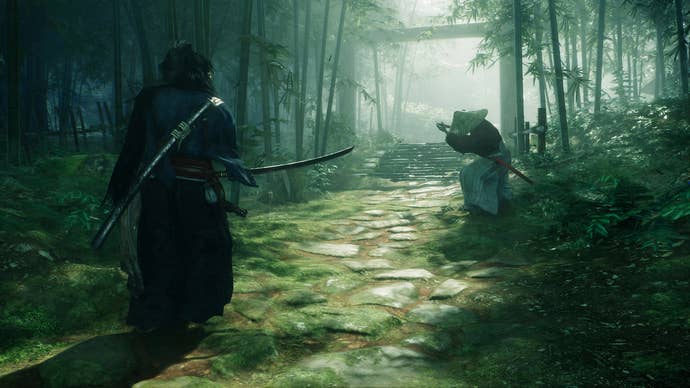
One can’t help but wonder, however, how much many of those changes were made simply to make the game more appealing to a wider audience. As a game built on the bones of Nioh and Wo Long, Rise of the Ronin often comes across as a less confident game that harshly sands off its roughest edges. It’s like telling someone you just met that you’re a video editor, because you’re worried that saying ‘I have a YouTube channel’ could scare them off.
That reluctance to trust the player extends to various other parts of the game’s make-up, such as armour having no weight, levels lacking major shortcuts, and the removal of the more demanding mechanics like Nioh 2’s burst counters and affinities. What’s particularly frustrating is that Ronin is still a game whose combat relies on a lot of button modifiers, and whose enemies can kill you in two hits. It goes against the simplicity the audience it’s seemingly trying to please typically gravitates towards.
Much of what you can experience in Rise of the Ronin has been done better elsewhere. Team Ninja picked the wrong edges to smooth off. Rather than go down the Elden Ring road of allowing freedom of exploration and discovery to balance out the challenge of combat, Rise of the Ronin instead takes a step backwards to the era of rigid open-world games that put players on treadmills, and train them to expect rewards when the bell rings.
It's a disappointing change of stance from Team Ninja, and one that could leave them open to an unfortunately mortal blow.
Rise of the Ronin launches on March 22 for PlayStation 5, exclusively. This review was written based on code provided by the publisher.
